The Ever Evolving State of the art
- Posted on: May 2 2016
- Leave a response
It seems that just when you finally master a technical protocol, it changes! Going back to early adhesion, it was always all about the enamel and anything bonded in the back of the mouth would fail. Today is a totally different story even if, for now, enamel is still the ace bond. What has changed are the reasons and methods for managing the dentin and in the Bisco Workshop at the IAPA, we dove into optimizing our bonds using the most advanced materials available.
As with so many things, the early attempts were an improvement, but were so exceedingly complicated that it kept all but the most fanatical die-hards away. If not for a few pioneers looking into options like Concept crowns and improving the science of adhesion, we would still be spatulating on cold glass slabs. Today we are fortunate to be able to stand on the shoulders of these giants and take advantage of the decades of evolution and improvement and are finally at the point where the systems have made the process both predictable and simple!
Today you can make a choice as to how you will bond your restoration into the mouth – and while a LOT of that comes from how you prepare the tooth, what you do at seat is dependent on what you are bonding your restorative materials onto. If you are conservative then you can maximize the remaining enamel and will seldom prepare the first crown on a tooth; or rather, if you do prepare that first crown on the tooth, your margins will remain high on the tooth and take advantage of the enamel you are bonding to. Benefiting from a broader band and higher quality as well as a lot more enamel, you can create a bonded margin that will be as strong as possible and approach the strength of bond between natural dentin and enamel. For the deeper preparations and replacing failing full-coverage crowns, you are primarily bonding to dentin and your bond protocol should reflect that. In this article we will outline options for both.
To start, your first goal in preparing the tooth should be to preserve as much tooth structure as possible and keep the margins away from the tissue and in healthy optimal enamel. To bond to this tooth structure, you will need to use a phosphoric acid bath of 15 seconds or more on the enamel. How to approach the dentin is an option you have, but in dealing with the enamel the prorocol is a highly viscous blue etchant covering the enamel. Should you prefer a traditional ‘total-etch’ or ‘etch and rinse’ approach, then you will also place that etchant on the dentin for less than 15 seconds so you will rim the enamel with etch and then fill in the exposed dentin and let it sit for 12 seconds and then rinse completely for at least 10 seconds. The dentin consequence of this is a 4 micron deep etched denin layer with a two-fold concern. One is you will create hydrolysis or water seepage under your bond and this water-rot will need to be addressed by applying a gluteraldehyde product. The other issue is the enzymatic breakdown of the dentin under the hybrid layer by matrix metalloproteinases or MMPs. These will eat away at the etched but under prime/bonded collagen and degrade the bond. While this is an evolving field, the protocol has been to treat with 2% Chlorhexadine to inhibit that enzymatic activity. The net result is when you phosphoric acid etch the dentin, you need to counteract the MMPs and hydrolysis so you additionally treat with gluteraldehyde and chlorhexadine.
Another approach would be to use a Self-etch or Universal adhesive product on the dentin. In this instance, you will rim the enamel with a highly viscous phosphoric acid etchant and count to 15. You will deliberately keep the etchant off the dentin as you will treat the dentin with the organic acids in the SE or Universal adhesive. After a thorough rinse of the etch and ensuring that delicate wet-dry-moist balance in the dentin, you will then apply your SE or Universal according to the manufacturer’s instructions. Using the AllBond SE, for instance, we would rub two 10 second coats of the SE into the dentin and onto the etched enamel and air-thin between coats and then air-thin and light cure the second coat. Using the Allbond Universal would be largely the same except it requires no mixing. Then, after curing, you will have a 1 micron deep hybrid layer in the dentin and there is not a wide enough band of unbonded affected dentin to concern us with hydrolysis or enzymatic breakdown so there is no need for gluteraldehyde or chlorhexadine.
The process of Immediate Dentin Seal is done at preparation and is more important as you get closer to the pulp as the dentinal tubules grow larger and the collagen in the deeper parts of the tooth are trickier to manage. Should you choose to place the Immediate Dentin Seal, then after rinsing your preps, you would not place any etchant, but rather use the organic acid etchant in your SE to create a 1-micron deep hybrid layer that seals the dentin but won’t significantly alter the enamel you will bond to at seat. This allows for bond maturation without the final restorative load as well as a huge decrease in the sensitivity at seat and the great thing is generally you won’t even need to anesthetize for delivery! The critical last step is prior to provisionalization, you would place the ProV Coat serarating medium.
In the case of full coverage crowns, since you really have little to no good enamel for bonding, it makes even more sense to utilize the SE or Universal adhesives and avoid complicating the dentin treatment by preparing it in a way that creates hydrolysis or enzyme breakdown concerns. Again, it is the evolution of the predictable and stable SE adhesives and the new Universals that makes this such a predictable solution. Of course, there are always performance variations with the newer materials and while there are several good products on the market today, it is quite fortunate that we were able to explore Bisco’s exceptional new SE and Universal adhesives. No surprise from the company that has been a standard to measure against in adhesives; they are the tie that binds when you are seating your restoration.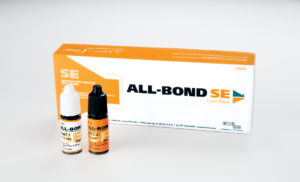
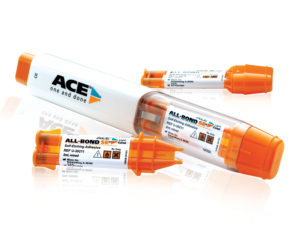
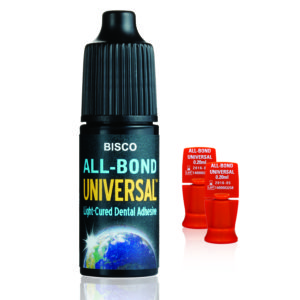
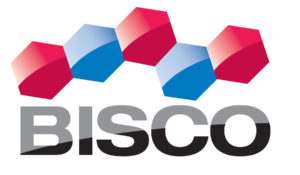
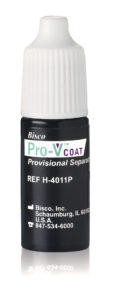
All-Bond 2 Primer A 002
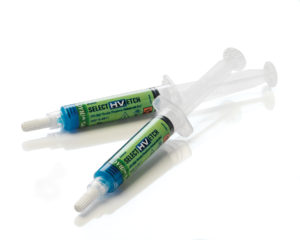
Select HV Etch with BAC 40ml 007
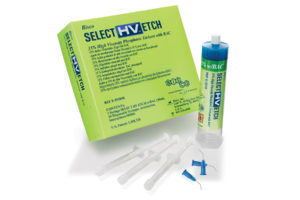
Posted in: What's New



